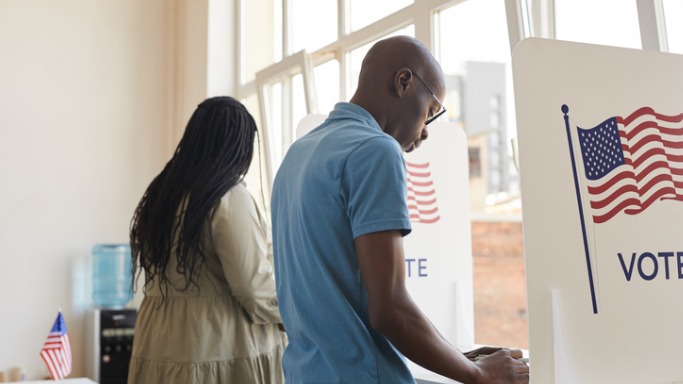For years, the Left has peddled the “big lie” that the Voting Rights Act requires racial quotas. That is false.
And yet the media repeatedly suggest that minorities have a right to be represented by people who look like them by comparing the racial makeup of political bodies to racial population statistics. These are the same stats that challengers to redistricting maps put forward in talking points to support their racial gerrymandering lawsuits. In an Alabama case, Merrill v. Milligan, the NAACP states, “[w]hile Black people are about 27% of Alabama’s population, they are represented in only one of seven (14%) congressional districts.” In a Louisiana case, Nairne v. Ardoin, the ACLU says that while “communities of color in Louisiana have grown, now making up 42% of the voting-age population, . . . just 26% (37 of 144) of current legislators are people of color.” In a Texas case, LULAC v. Abbott, LULAC contends that “four new congressional districts that Texas gained, as a result of its fast-growing Hispanic population, could be drawn in a manner that would create four new Latino performing districts.”
Litigators are asking courts to recognize a legal right of some voters to have a designated number of legislators of the same race. Evan Milligan, executive director of Alabama Forward, sued the State of Alabama, saying, “creating a second district would basically bring our congressional representation further in line with the actual realities of our population growth over the last 10 years.”
But what does the law actually say?
The 15th Amendment prohibits federal and state governments from denying or abridging the right to vote of U.S. Citizens “on account of race, color, or previous condition of servitude.” The 14th Amendment guarantees “equal protection” of the law to all citizens, and that amendment’s apportionment clause requires Congressional districts to be “apportioned among the several States according to their respective numbers, counting the whole number of persons in each State.” Here’s what the Voting Rights Act says:
“[N]othing in this section establishes a right to have members of a protected class elected in numbers equal to their proportion in the population.”
This language was inserted in the Voting Rights Act to force local jurisdictions to comply with the U.S. Constitution’s prohibition on denying members of any race the right to vote. The Constitution is a general law and protects every race, not just minorities. The legitimacy of our democratic system of government is based on the consent of the governed—rule by the majority of the voters, regardless of race.
The Voting Rights Act was passed, in part, to prevent map drawers from drawing districts based on racial criteria to disempower blacks. Majority-minority district drawing is counter to the standard of racial neutrality. Individuals are counted and separated from others by the color of their skin. And a line is drawn between them and put into law. So much blood was shed in the United States to stop those dividing lines.
Now, nearly 60 years after passage of the original Voting Rights Act, litigators are swarming the courts to challenge redistricting maps passed by elected officials on the grounds that they do not create enough districts where the majority of the population is people of color. But there is no statutory (or constitutional) right to racial quotas in redistricting. And unelected judges shouldn’t be in the business of drawing political maps.
The idea that the Voting Rights Act creates a right to minority voting districts puts map drawers between a rock and a hard place: how do you draw a map considering race (to create a majority-minority district) and at the same time avoid considering race (to guarantee equal protection of the law)?
Politicians, of course, have a perverse incentive to continue to play racial identity politics when it comes to redistricting. And there can be little progress on civil rights if courts keep telling map drawers they are legally required to use race in drawing maps.
In the court of public opinion, the idea that minorities can only be adequately represented by people of the same race advances a disturbing narrative of racial tribalism that threatens the very notion of representative democracy. And it perpetuates the discriminatory notion that neighbors of different races cannot possibly share political interests or elect a candidate who would represent them both. So much progress has already been made to combat racism in voting and racial segregation. Let’s not go backwards.
To learn more, check out IWLC’s Legal Policy Focus: The Voting Rights Act.

